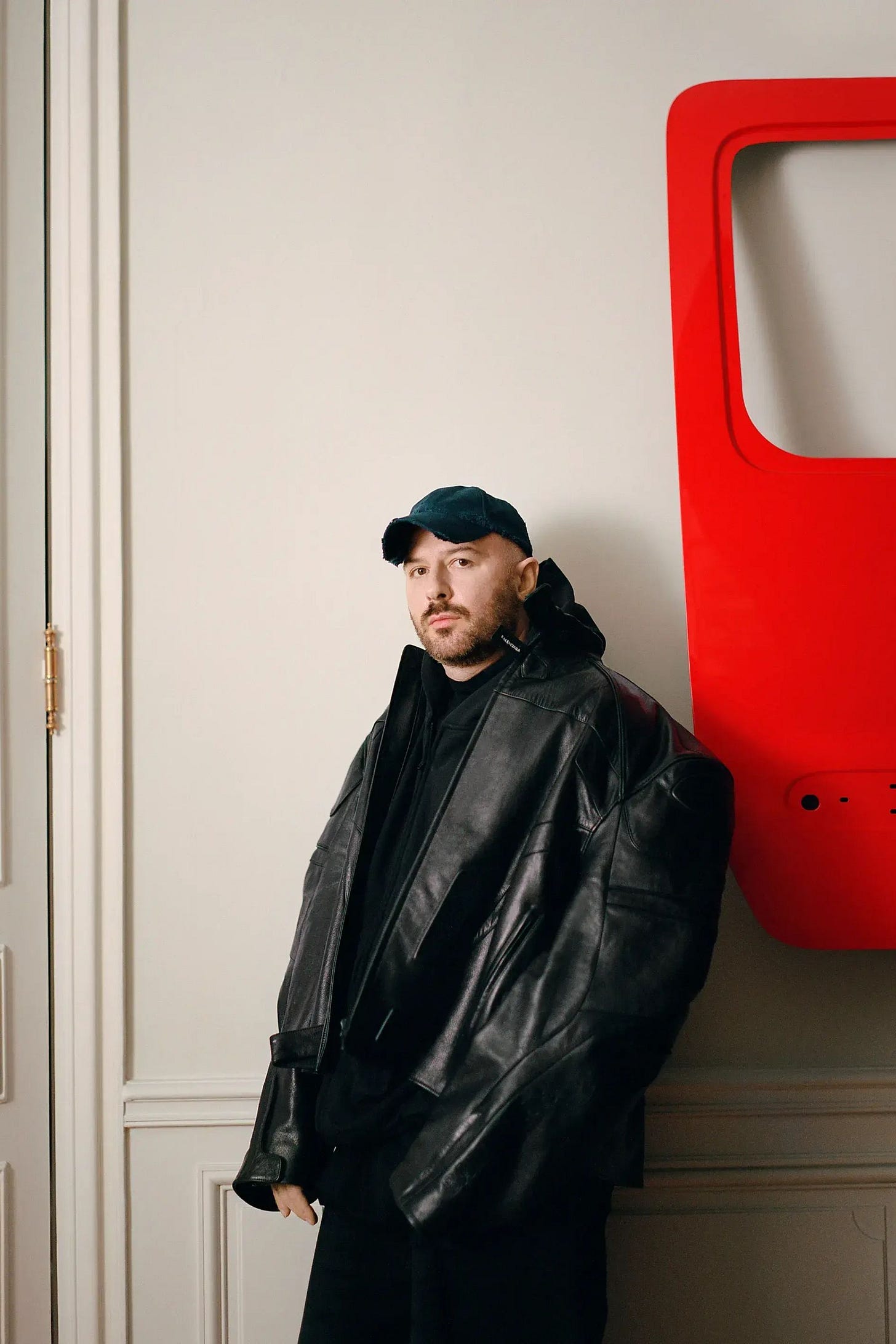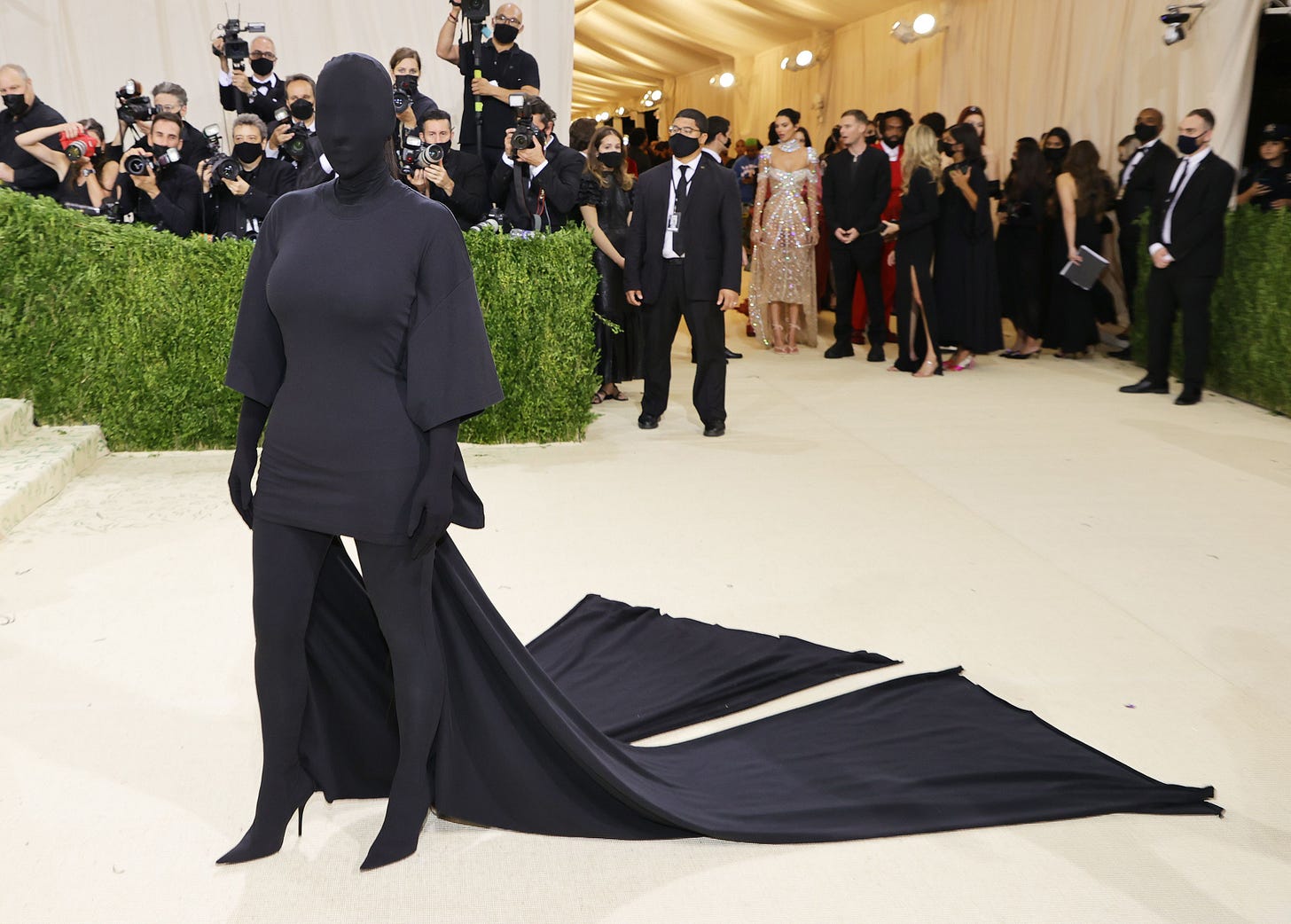The Fashion Turmoil pt. 2
As the musical chair game continues, are brands shaping us, or just reacting to us?
One of the most shocking headlines of the year has left the industry deeply polarized this past week: Demna Gvesalia has been appointed Creative Director at Gucci after a decade at Balenciaga.
Since it has lost the creative voice of Alessandro Michele, Gucci has been going on a rollercoaster of events and emotions.
Looking at the last collection delivered by Demna, it seemed clear that, by the look of it, this was his last season at Balenciaga. Demna Gvesalia created a name for himself by creating collections and fashion shows that would spark deep conversations around social and political matters, whereas Gucci has been lacking cultural relevance since Alessandro Michele left the brand.
By saying this, I’m not saying that the previous creative director, Sabato de Sarno, did a bad job. I think the pressure was too high and the shoes he had to fill were too big. His fault has been to chase trends and fall into the mainstream trap. But we shouldn’t forget that, behind the creative director, there’s a commercial team driving the strings from behind the scenes. Unfortunately, in a matter of 2 years he has not only lost the identity of the brand but, by doing something completely different from what Alessandro Michele was proposing, he automatically lost the VIC clients who were faithful to that previous aesthetic. Plus, 2 years, 4 Fashion Shows, 1 exhibition in London (Gucci Cosmos), and a few Campaigns, are too short to make people dive into your new world.
The sad thing is that when a designer who didn’t perform well leaves a brand, the first question that comes to mind is, ‘Who will be the next one to fill his seat?’ instead of ‘Where is he going next?’
Why did they choose Demna? Is he the right choice? How did the industry react to it?
With the brand searching for a new identity, Kering made a bold choice. If you think about it, Gucci is way bigger than Balenciaga. So, for sure the money must have been an interesting point for Demna. But let’s go more in depth to why Francesca Belletini, Deputy CEO of Kering, chose Demna Gvesalia to revitalize the aesthetic of Gucci.
For past appointments, Kering has consistently hired new voices, professionals less known to the outside community but known to the insiders: Sabato de Sarno and Alessandro Michele for Gucci, Anthony Vaccarello for Saint Laurent, and Louise Trotter for Bottega Veneta. They allowed in-house designers whom established their voices in the industry.
The success of this new Gucci-Demna pairing stands entirely on his ability to move beyond the Vetements-Balenciaga aesthetic. Demna is one of the most talented designers working in the industry today, not only for his deep understanding of culture and internet dynamics but also for his sensitivity to social issues. He is a master communicator and community builder, consistently delivering runway moments with an original twist.
I personally encourage you to listen to this interview with Cathy Horyn, you may better understand his creative genius.
Gucci’s past creative direction left the brand’s core identity codes blurry and confused: Tom Ford’s aesthetic was all about sexiness, women empowerment, and sleek cuts and silhouettes whereas Alessandro Michele brought his maximalist, eclectic and romantic style with massive vintage inspiration. After 20 years, looking back at the house’s history, this constant shuffle of direction and aesthetic has left the brand in desperate need of clarity and a new sense of purpose — something that feels both culturally relevant and timeless. Gucci doesn’t just need another trend-driven reinvention; it needs a bold, long-term vision that can re-anchor the brand while pushing it forward.
Still, this situation is not new. Prada, for example, went through a difficult period back in 2016.
By 2023, Prada’s revenue reached approximately €4.2 billion, reflecting a 16.7% increase over ten years. The group underwent a reinvention, restructuring its marketing, merchandising, and internal operations — a shift that soon translated into a revitalized image for the brand.
The question now is, can Demna introduce something fresh and cohesive to Kering’s flagship brand?
“This strategic move reflects Gucci's commitment to embracing creative risk and visionary ideas, moving beyond trend-driven reinventions towards a cohesive and enduring identity. Demna's appointment is anticipated to reignite Gucci's creative energy, positioning the brand for renewed growth and cultural significance.” (Vogue Business, What Does Demna’s Appointment Mean for the Future of Gucci?)
The Musical Chairs Game Continues:
Just in case you were feeling a little lost, here’s a list of brands with recent or upcoming Creative Director changes:
Loewe, Chanel, Gucci, Bottega Veneta, Dior, McQueen, Versace, Tod’s, Valentino, Ferragamo, Celine, Balenciaga, Gucci, Missoni, Marni, Fendi, Givenchy, Rochas, Dries Van Noten.
The musical-chairs shuffle doesn’t seem to end and probably will continue to go on for quite some time. It’s funny how the industry became obsessed with this game-like situation, as everybody wants to be ahead of the news to look more as an ‘insider’. I’m not gonna lie, I’m so into it, even if from afar.
It became also official that Jonathan Anderson is out of Loewe, after 11 years at the house. Everybody online is already commenting on how weird it is that they haven’t sent out the news about him going to Dior, since it seems to be already confirmed. Apparently, Maria Grazia Chiuri’s exit hasn’t been easy and she’s not giving LVMH an easy time - but I already talked about this in my old newsletter.
The Fashion system is feeling very open to judge the moves and decisions that these big luxury conglomerates are doing, when in fact, we don’t really know what their full potential could be. None of us has sat down and talked about commercial and creative strategy with Alessandro Michele or Demna. Yet, it seems that everybody feels entitled to judge and critize these decisions from afar. It became a game, too easy to play.
It’s very complicated to analyse where the success of a brand may lay into. Sometimes, like for Miu Miu, it’s just basic hype defined by the trend of the year. Fashion is a constant changing wheel and there’s no easy explanation to why a certain eaesthetic is trending. We can all look at how a brand is selling as the datas’ are public, but there’s not gonna be a mathematic formula that can easily be applied to have this success. Sometimes I wonder if the brand can forecast when they will have their moment, or if it’s something that just happens.
There are IT products that do not have any correlation to what the brand stands for at an overral look: like for example Alaia’s ballerinas have been and are still a huge phenomenon, Margiela’s Tabis as well and so on. People became obsessed with these IT products just because of what they see on Tik Tok, the dream and the kind of persona it’s connected to. Buying this kind of product can make you feel part of something more exclusive but at the end of the day, once you have it, you may be already be looking for the next product to add to your cart as a compulsive loot where we are all in.
While brands like Gucci and Miu Miu have increasingly positioned themselves to capture mass attention and cultural virality, niche houses like Alaïa or Margiela still prioritize a more selective conversation with their audience. But no brand, no matter how big or small, is immune to the pressure to stay relevant. The challenge today is finding that balance - preserving a distinct creative voice while navigating a world where mass appeal often feels like the ultimate goal, especially under the pressure of commercial teams.
In my opinion it’s clear that brands aren’t just fighting for relevance, they’re fighting to protect their voice in a system that no longer allows for patience or long-term vision. And maybe that’s the real issue no one wants to admit.





